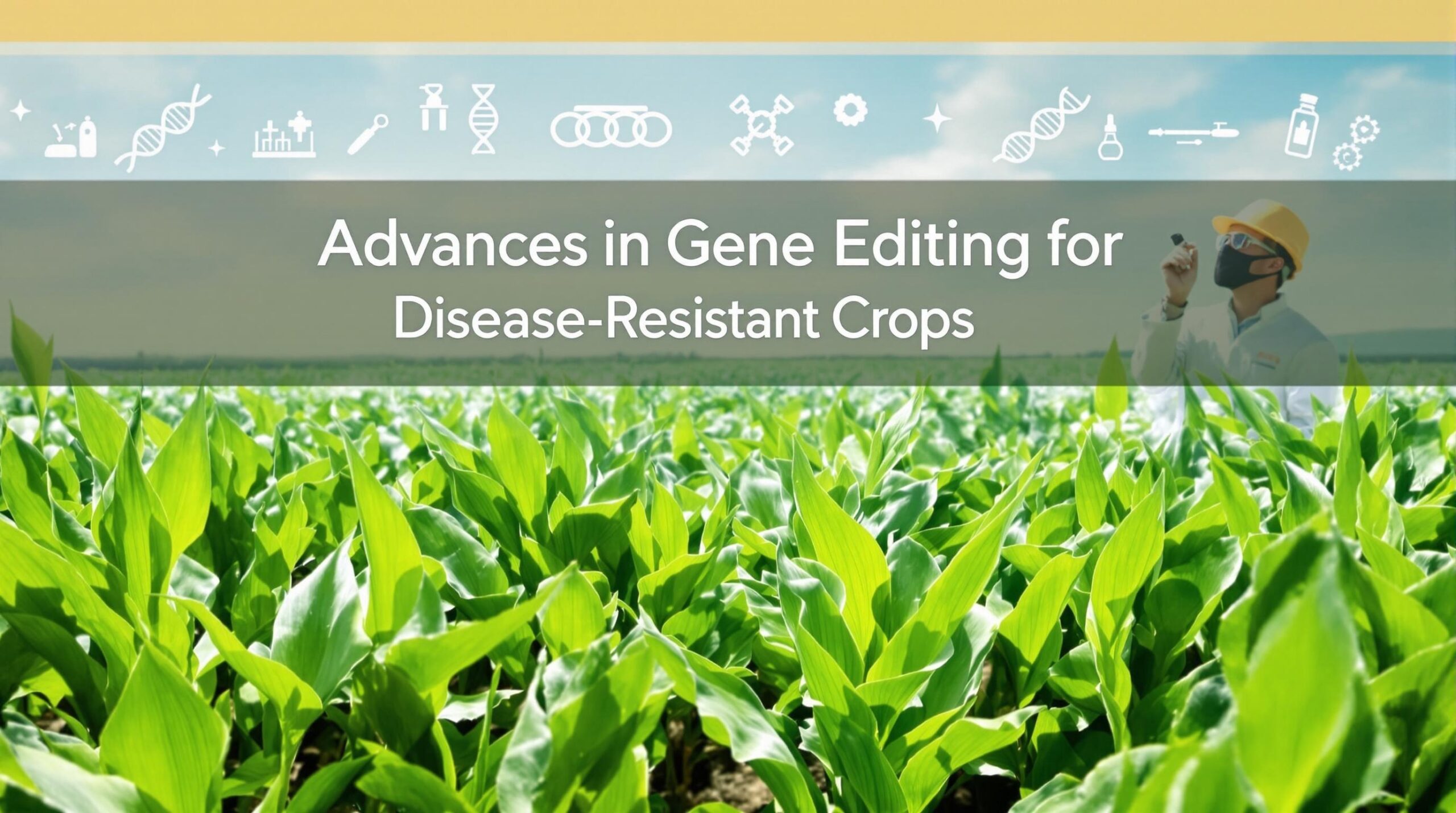Gene editing technology is transforming agriculture in remarkable ways. Modern methods now allow scientists to create disease-resistant crops with unprecedented precision. This shift offers hope to farmers facing major threats from plant pathogens. Improved crop resilience supports food security and reduces reliance on chemical pesticides.
The Need for Disease-Resistant Crops
Crop diseases threaten global food supplies. Fungi, bacteria, and viruses regularly damage staples like wheat, corn, and rice. These outbreaks can destroy entire harvests, leading to significant economic and food losses worldwide. Climate change intensifies the problem, enabling new pests and pathogens to thrive in unexpected regions.
Traditional breeding methods help combat plant diseases. However, breeding for resistance can take many years and is often imprecise. Disease-causing organisms also evolve quickly, sometimes overcoming plant defenses with alarming speed. Modern agriculture therefore, needs faster, more targeted solutions.
How Gene Editing Works in Agriculture
Gene editing technologies, such as CRISPR-Cas9, have revolutionized crop improvement. These tools enable researchers to modify specific genes responsible for susceptibility to disease. Scientists can remove, replace, or deactivate particular DNA sequences within the plant genome.
Unlike traditional breeding, gene editing does not require adding foreign DNA from other species. It simply tweaks the crop’s existing genetic code. This accuracy reduces the chances of unintended changes elsewhere in the genome. As a result, gene editing can produce disease-resistant crops quickly and reliably.
Success Stories in Disease-Resistant Crops
One major breakthrough involves wheat, the world’s most widely grown cereal crop. Scientists used gene editing to develop wheat varieties resistant to powdery mildew, a fungal disease that devastates fields. By disrupting specific genes involved in susceptibility, the plants gain durable resistance and retain high yields.
Researchers have also targeted bananas, which frequently suffer from Panama disease. Using CRISPR, scientists deactivated a gene that makes bananas vulnerable to this lethal fungus. The resulting plants withstand infection and could stabilize banana production for millions of people.
Tomatoes, rice, and soybeans are among other crops benefiting from gene editing. In each case, researchers identify a key gene that facilitates pathogen infection. By precisely changing or removing these genes, scientists create varieties that naturally repel disease.
Benefits Beyond Disease Resistance
The widespread adoption of gene-edited, disease-resistant crops offers benefits across the agricultural sector. Improved resistance means farmers use fewer fungicides and pesticides. This reduces production costs, environmental pollution, and potential health risks to farmworkers and consumers.
Enhanced crop health also contributes to stable food supplies worldwide. Yields become more reliable, even in regions experiencing outbreaks or shifting climate patterns. Surplus harvests can mean lower market prices and improved food security for vulnerable populations.
Gene editing technology fosters innovation in plant science and can speed up the process of crop improvement. Researchers can tackle new disease threats faster, ensuring that agriculture adapts quickly to changing environments. This agile response is essential for feeding a growing global population.
Potential Challenges and Concerns
Despite its promise, gene editing faces several challenges. Some critics worry about unintended effects, such as changes to neighboring genes. Rigorous testing and regulatory oversight help minimize these dangers, yet public concerns about genetically modified food remain widespread.
Regulatory agencies in different countries treat gene-edited crops in various ways. In some regions, these crops are regulated less strictly than traditional GMOs. Other areas maintain strict controls, slowing down research and commercial adoption. Reaching consensus on safety will be crucial for the technology’s future.
There are also ethical considerations. Some argue that smallholder farmers may struggle to access expensive gene editing tools or seeds. If larger agribusinesses control most gene-edited crops, concerns about equity and sustainability might worsen. Fair and inclusive distribution of benefits is a shared responsibility.
The Future of Disease-Resistant Crops
The pace of innovation in gene editing continues to accelerate. New techniques, such as base editing and prime editing, allow even more technical precision. These methods target single DNA letters and correct specific mutations linked to disease susceptibility.
As research advances, scientists are also improving how they identify valuable genes for editing. Advances in genome sequencing mean researchers can rapidly pinpoint genetic changes linked to disease resistance. Machine learning models predict the effects of gene edits with increasing accuracy, streamlining the entire process.
Collaborations between public institutions, academic researchers, and private companies are expanding the reach of disease-resistant crops. Many projects provide open access to data and gene-editing methods. This collaborative approach ensures that innovations benefit farmers across diverse agricultural systems, including those in developing countries.
The Role of Education and Outreach
Building trust in gene-edited crops requires transparent communication and education. Farmers need to understand the safety, benefits, and limitations of these technologies. Scientists play a key role by engaging with the public and responding to questions about genetic modification and food safety.
Consumer acceptance of gene-edited food products will shape agricultural policy and commercial investment. Educational programs, public dialogues, and clear labeling practices help address concerns. Policymakers and industry leaders must create systems that instill confidence and protect consumer choice.
Conclusion
Advances in gene editing are unlocking vast potential for disease-resistant crops. By making precise changes to plant DNA, scientists create varieties that stand strong against devastating pathogens. These breakthroughs support sustainable farming, reduce chemical use, and enhance food security.
Despite challenges in regulation, access, and public perception, gene editing holds great promise for the future of agriculture. As new tools and partnerships emerge, the vision of climate-resilient, disease-free crops is steadily coming within reach. Ongoing research, responsible oversight, and inclusive solutions will help realize the full benefits of this technology for farmers and consumers worldwide.


